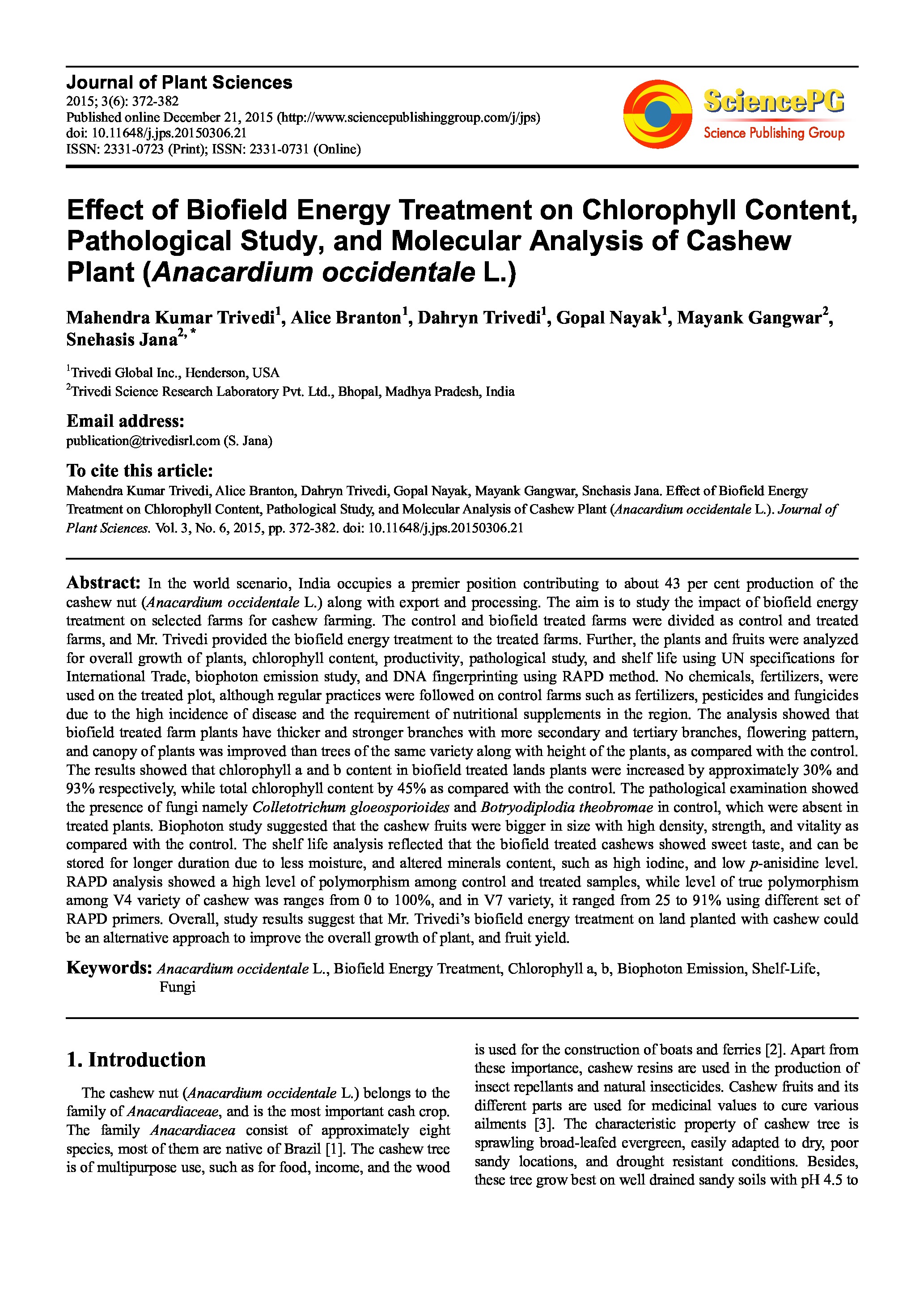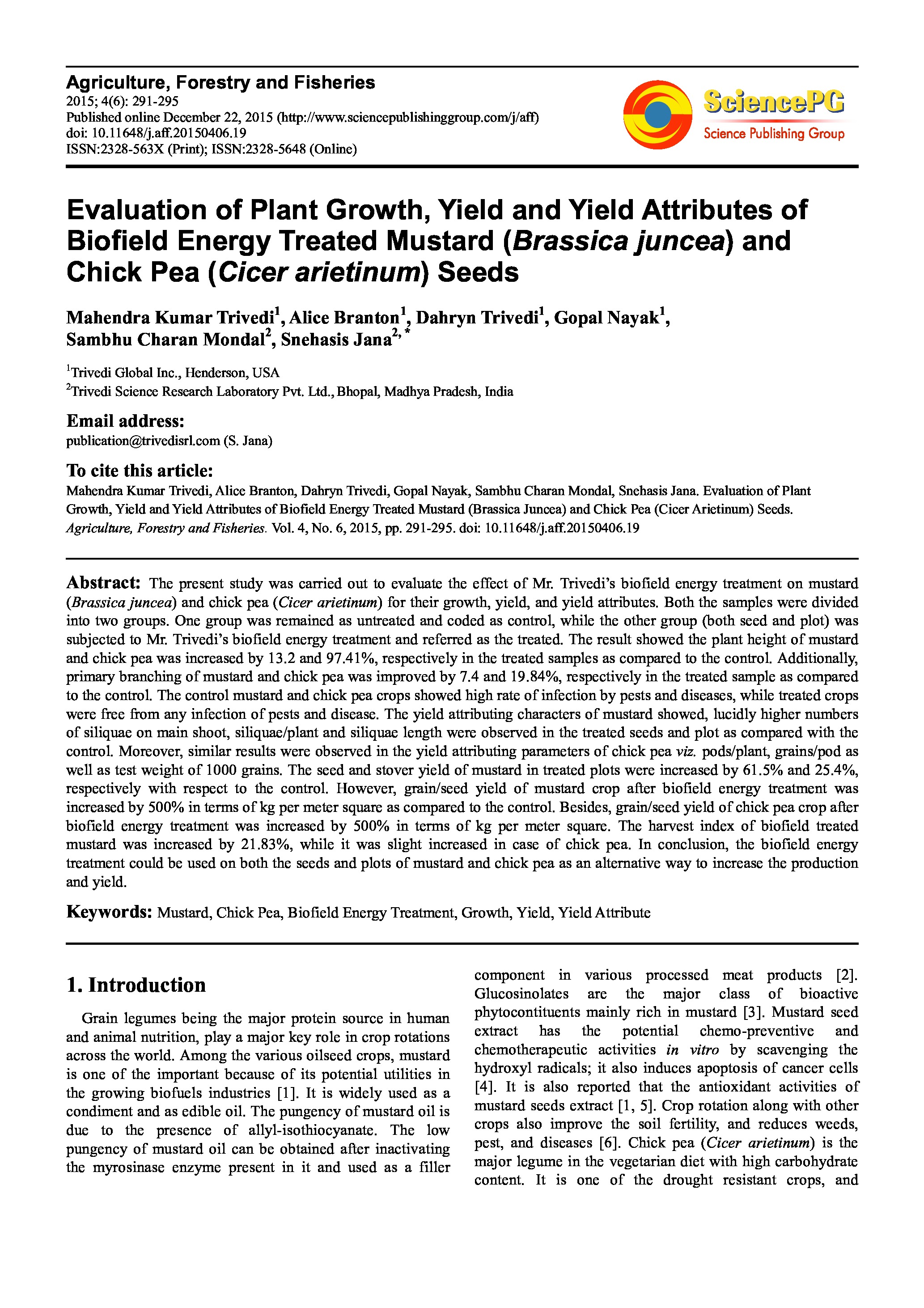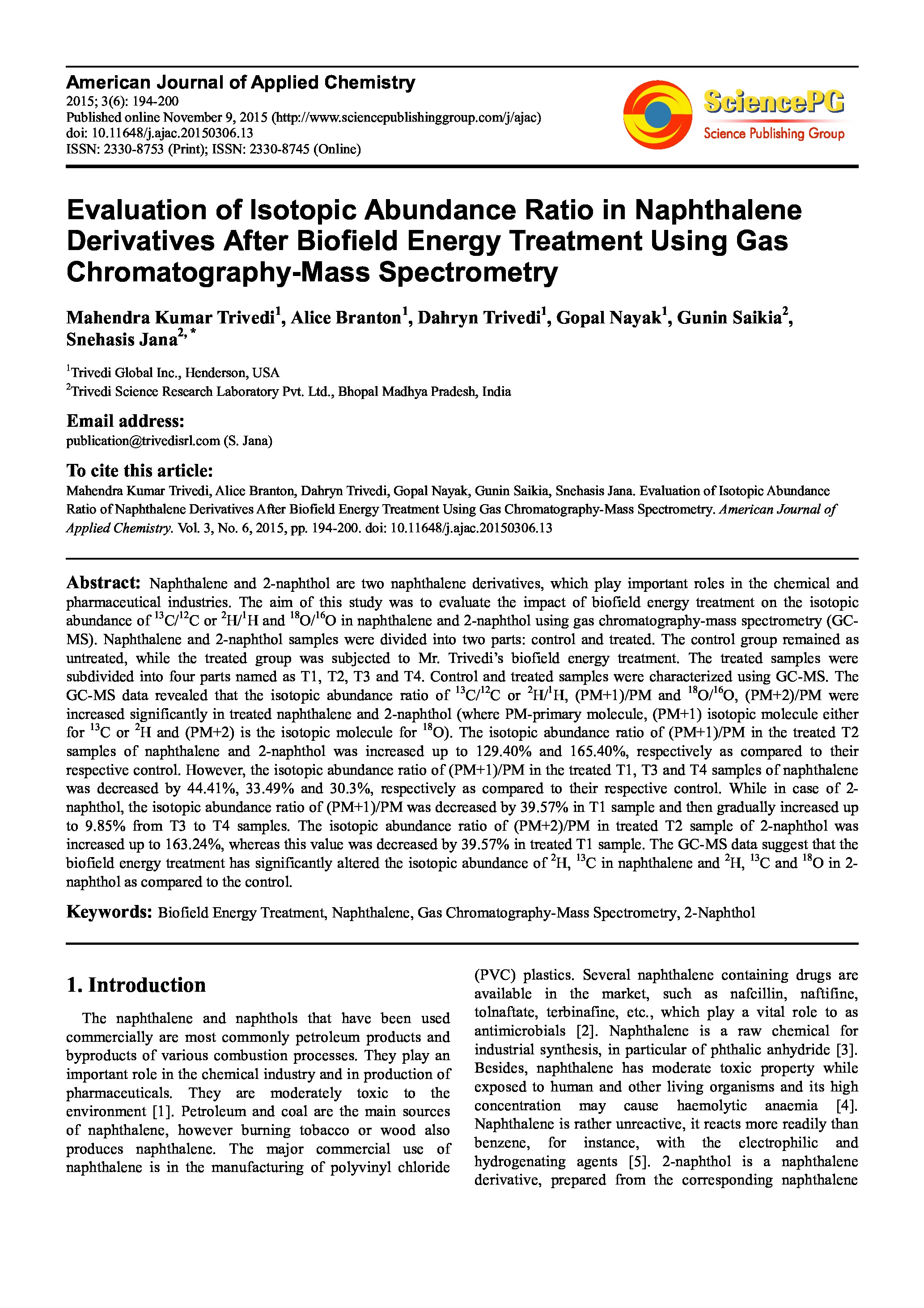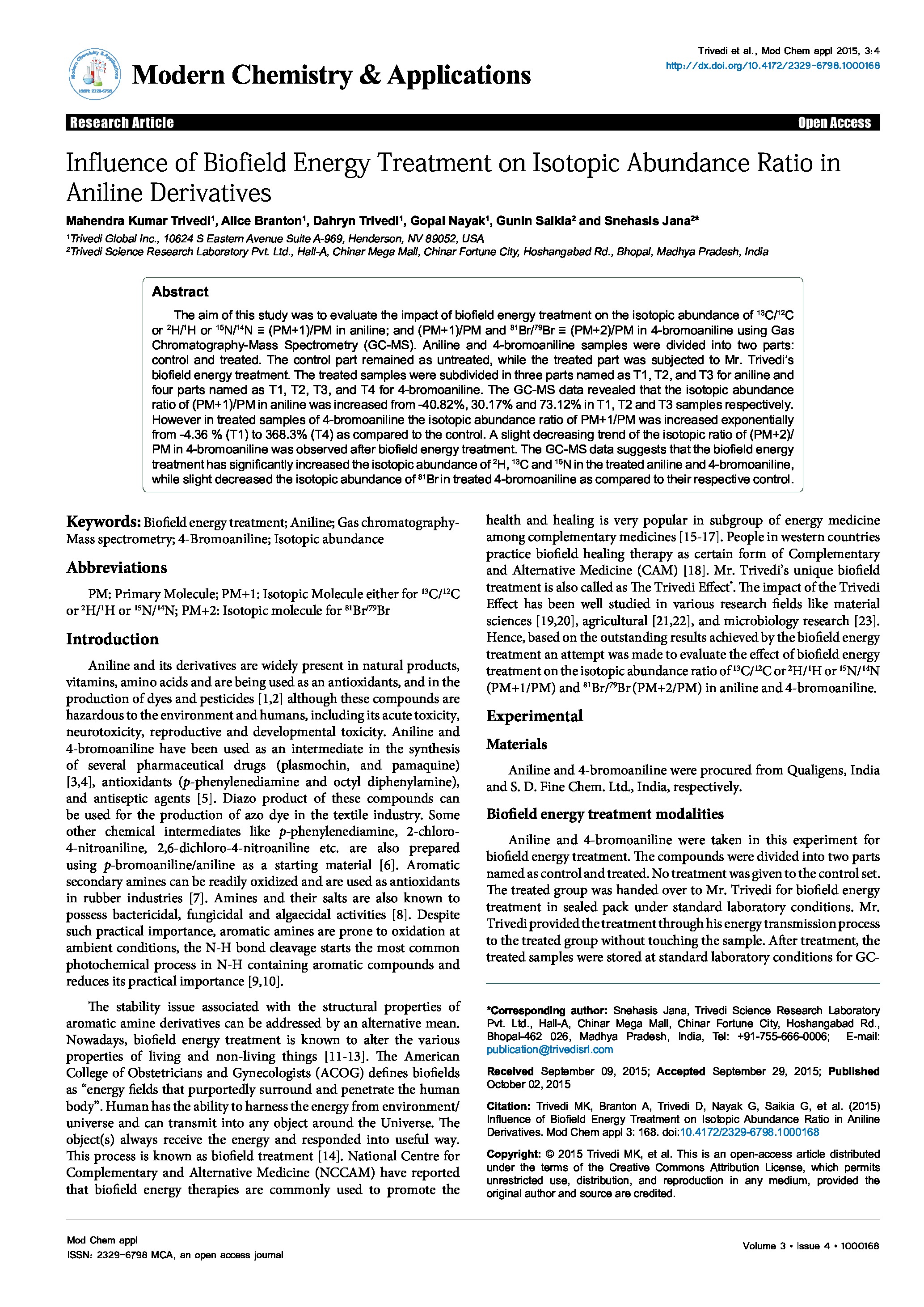Date of upload:
16.12.2016
Co-author:
Mahendra Kumar Trivedi, Alice Branton, Dahryn Trivedi, Mayank Gangwar, Snehasis Jana
Abstract:
In the world scenario, India occupies a premier position contributing to about 43 per cent production of the cashew nut (Anacardium occidentale L.) along with export and processing. The aim is to study the impact of biofield energy treatment on selected farms for cashew farming. The control and biofield treated farms were divided as control and treated farms, and Mr. Trivedi provided the biofield energy treatment to the treated farms. Further, the plants and fruits were analyzed for overall growth of plants, chlorophyll content, productivity, pathological study, and shelf life using UN specifications for International Trade, biophoton emission study, and DNA fingerprinting using RAPD method. No chemicals, fertilizers, were used on the treated plot, although regular practices were followed on control farms such as fertilizers, pesticides and fungicides due to the high incidence of disease and the requirement of nutritional supplements in the region. The analysis showed that biofield treated farm plants have thicker and stronger branches with more secondary and tertiary branches, flowering pattern, and canopy of plants was improved than trees of the same variety along with height of the plants, as compared with the control. The results showed that chlorophyll a and b content in biofield treated lands plants were increased by approximately 30% and 93% respectively, while total chlorophyll content by 45% as compared with the control. The pathological examination showed the presence of fungi namely Colletotrichum gloeosporioides and Botryodiplodia theobromae in control, which were absent in treated plants. Biophoton study suggested that the cashew fruits were bigger in size with high density, strength, and vitality as compared with the control. The shelf life analysis reflected that the biofield treated cashews showed sweet taste, and can be stored for longer duration due to less moisture, and altered minerals content, such as high iodine, and low p-anisidine level. RAPD analysis showed a high level of polymorphism among control and treated samples, while level of true polymorphism among V4 variety of cashew was ranges from 0 to 100%, and in V7 variety, it ranged from 25 to 91% using different set of RAPD primers. Overall, study results suggest that Mr. Trivedi’s biofield energy treatment on land planted with cashew could be an alternative approach to improve the overall growth of plant, and fruit yield.




